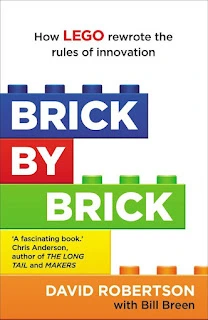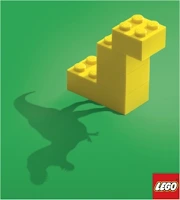We all know LEGO. Those rock-hard bricks that keep reminding you for hours that you’ve just stepped on them.
I’m kidding. We all know LEGO, of course, because we either played with it ourselves, or have children who did (or do), or have acquaintances with children, and so on and so forth. LEGO is a part of all of us, in one form or another.
Ole Kirk Christiansen was a carpenter who founded LEGO in 1932 (it was first named The Lego Group) when trading in the creation of household products for wooden toys. It wasn’t until 15 years later that the first small plastic brick came out of the plastic molding injection machine. No one could have predicted that this tiny piece of plastic would become such a huge and global success story.

The book Brick by brick by David Robertson colourfully describes the story of LEGO. The author does so in a moving way which makes the book easy to read. It is recommended to anyone who – like me – loves those coloured bricks.
It is interesting to read about the success behind the story and the enormous popularity of LEGO. And it may not come as a surprise (given the title of this blog-post) that this has everything to do with principles.
LEGO used (and still uses) a set of basic principles. And these principles have not been deviated from to this day.
Principles of Play
The principles to which LEGO conformed its products were drawn up by the son of LEGO’s founder, Godtfred Kirk Christiansen, after having visited a toy fair in London in 1954. On the boat back to Denmark, Godtfred got into a conversation with a toy buyer. The buyer wondered aloud why manufacturers focused on creating unique products, while he believed that the true power of repeating sales lay in developing a cohesive system where sets of toys were interrelated.
Godtfred kept this thought in his head until he developed the now well known Principles of Play.
- Limited in size without setting limitations for imagination
- Affordable
- Simple, durable, and offer rich variations
- For girls, for boys, fun for every age
- A classic among toys, without the need of renewal
- Easy to distribute
Looking at these principles it is easy to see that simplicity is a key factor. Simplicity in the name, but certainly not in the execution. For how simple a principle as A classic among toys, without the need of renewal may sound, in practice it means quite a lot. For example, an attempt was once made to save money by reducing the layers of paint of the bricks (normally there were three) to only two layers. This would have saved the company a considerable amount of money, at the expense of the quality of the bricks. Ole Kirk Christiansen, however, would have none of this and ordered the bricks with only two layers of paint to be taken back and be coated with the third layer. Quality was not to be compromised.
It took the company some 40+ years to reach EUR 150 million in sales – which is impressive on its own – but sales really skyrocketed when LEGO revisited their first principle limited in size without setting limitations for imagination. By focussing on creating themed sets, such as Space, Castle and Pirates, LEGO allowed kids to immerse themselves in the world of astronauts, knights and rough-bearded seafarers. The limitations for imagination were uplifted. Sales went up fivefold.
An ingredient for succes
The legendary success of the wooden toymaker from Denmark should more often serve as an example for today’s companies. Too often I notice that principles are drawn up with the best of intentions and then thrown overboard or ignored the moment something important need to be realized that does not initially fit within the confines of the principles. Too often, two layers of paint are chosen.

LEGO’s six basic principles provide enough of a framework to make an excellent product while also leaving enough room for free interpretation and imagination. Companies should follow this example. I am convinced that this will more than benefit an organization’s operations.
Looking back at the aforementioned Principles of Play, I can say that – as far as I’m concerned – I respect a company that manages to commit itself for decades to making a product that does indeed fulfill 100% of being a classic among toys, without the need of renewal. In my younger years, I myself played with LEGO, provided by my 15 years older cousin. This LEGO has been gratefully used by my own children some 25 years later and is currently stored away in the attic waiting for my grandchildren. Two and a half generations these bricks have lasted, and after being given a wash, they look like new again. I’m sure there are few companies that can say the same about the longevity of their products and services.
LEGO is and remains, a classic among toys. Adhering to principles is what has made this possible.







Leave a Reply